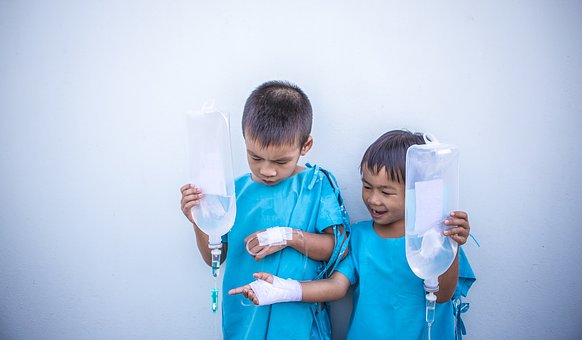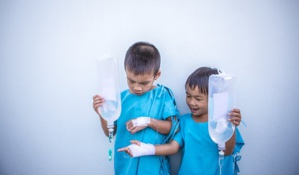Dailycsr.com – 01 September 2017 – Thanks to Sappi paper now bacteria accumulation will be reduced by “90–95 percent without the use of toxic chemicals” the moment there is a germ build up on the surface, thus moving towards the creation of “resistant organisms”.
In the year of 2002, during a research on “seemingly unrelated problem”, Dr. Anthony Brennan, Professor of Materials Science Engineering, noted that sharks are not bothered by growing algae or barnacles on themselves, while “other marine life” are attached with them.
Therefore, he prodded further with his investigation and came upon “a microscopic surface pattern on the dermal denticles of sharkskin” which does not allow micro-organisms to latch on the sharks’ body. Dr. Brennan, attempted to “recreate” the same pattern for yielding “similar results outside” oceans. As a result, the “Sharklet™ microtexture” was designed.
The innovation of micro-pattern is the “first of its kind” to reduce “bacterial contamination” in contact point without involving any chemical use. While the application possibility of this inventions sounds “endless”, the issue of applying the “texture to various surface” still needs to be looked into.
As Sappi has been always looking towards the “next industry-changing innovation”, its “Casting and Release business” noticed Sharklet’s “microtexture” and licensed the same and created Neoterix ST, a “groundbreaking product” that moulds onto an area and transfers “the texture” into a desired surface. Likewise, it becomes easier to “apply to things” such as “furniture, paneling and wall coverings”, whereby “drastically” minimising bacterial aggregation especially places like “hospitals, hotels, schools and offices”.
Moreover, place that are banning “traditional antimicrobials” could adopt “Neoterix™ ST”, while a senior marketing manager at “Sappi’s Casting and Release business”, Michael Greene, said:
“A year and a half ago, a major health care organization on the West Coast banned a list of 14 different antimicrobial solutions from its hospitals in the pursuit of providing healthier environments for their patients. They’re either going to rely on standard cleaning practices or will need to look at other technologies. Neoterix™ ST is a great option, because it has no chemical additives or toxins.”
In fact, Sappi has further plans of moving beyond Neoterix™ ST and experimenting “to find the right way to apply the pattern” that would fit onto its “release papers”, whereby eventually commercialising “other microscopic textures surfaced”. While, Ethical Performance added:
“One of these is a pattern that refracts light, breaking it up into individual colors to create a rainbow effect. This light-refracting microtexture launched as an aesthetic texture, and it’s one that shoe companies have already shown particular interest in adopting thanks to the superb brilliance of the light effects in a fabric they already know how to use”.
For more information, kindly visit:
http://bit.ly/SNA-2016SR
References:
ethicalperformance.com
In the year of 2002, during a research on “seemingly unrelated problem”, Dr. Anthony Brennan, Professor of Materials Science Engineering, noted that sharks are not bothered by growing algae or barnacles on themselves, while “other marine life” are attached with them.
Therefore, he prodded further with his investigation and came upon “a microscopic surface pattern on the dermal denticles of sharkskin” which does not allow micro-organisms to latch on the sharks’ body. Dr. Brennan, attempted to “recreate” the same pattern for yielding “similar results outside” oceans. As a result, the “Sharklet™ microtexture” was designed.
The innovation of micro-pattern is the “first of its kind” to reduce “bacterial contamination” in contact point without involving any chemical use. While the application possibility of this inventions sounds “endless”, the issue of applying the “texture to various surface” still needs to be looked into.
As Sappi has been always looking towards the “next industry-changing innovation”, its “Casting and Release business” noticed Sharklet’s “microtexture” and licensed the same and created Neoterix ST, a “groundbreaking product” that moulds onto an area and transfers “the texture” into a desired surface. Likewise, it becomes easier to “apply to things” such as “furniture, paneling and wall coverings”, whereby “drastically” minimising bacterial aggregation especially places like “hospitals, hotels, schools and offices”.
Moreover, place that are banning “traditional antimicrobials” could adopt “Neoterix™ ST”, while a senior marketing manager at “Sappi’s Casting and Release business”, Michael Greene, said:
“A year and a half ago, a major health care organization on the West Coast banned a list of 14 different antimicrobial solutions from its hospitals in the pursuit of providing healthier environments for their patients. They’re either going to rely on standard cleaning practices or will need to look at other technologies. Neoterix™ ST is a great option, because it has no chemical additives or toxins.”
In fact, Sappi has further plans of moving beyond Neoterix™ ST and experimenting “to find the right way to apply the pattern” that would fit onto its “release papers”, whereby eventually commercialising “other microscopic textures surfaced”. While, Ethical Performance added:
“One of these is a pattern that refracts light, breaking it up into individual colors to create a rainbow effect. This light-refracting microtexture launched as an aesthetic texture, and it’s one that shoe companies have already shown particular interest in adopting thanks to the superb brilliance of the light effects in a fabric they already know how to use”.
For more information, kindly visit:
http://bit.ly/SNA-2016SR
References:
ethicalperformance.com


 Sappy’s Forward Looking Approach Licenses ‘Bacteria-Free’ Surface
Sappy’s Forward Looking Approach Licenses ‘Bacteria-Free’ Surface





 Companies
Companies